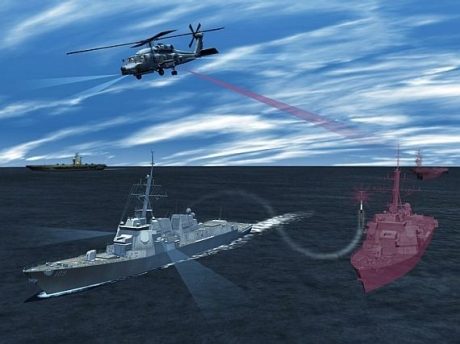
ARLINGTON, Va. — Lockheed Martin expects to deliver the first production pods of a heliborne electronic warfare system to the Navy this summer.
Joe Ottaviano, director, Maritime & Air Cyber/Electronic Warfare for Lockheed Martin, told reporters Jan. 11 at the Surface Navy Association’s annual symposium in Arlington that Lockheed Martin has completed flight testing of the Advanced Off-Board Electronic Warfare (AOEW) System and expects to deliver the first low-rate initial production examples to the Navy in July or August 2022.
The ALQ-248 AOEW is a self-contained pod designed to be taken aloft by an MH-60R or MH-60S Seahawk helicopter and serve as an offboard electronic attack system to counter anti-ship cruise missiles. The AOEW will be able to detect an incoming missile, evaluate its direction and use radio frequency countermeasures to deter the missile.
The pod can be attached to either side of the helicopter, which provides power and mobility for the pod, but the pod’s operation is independent of the helicopter crew and linked to the SLQ-32(V)6 shipboard electronic warfare system. The AOEW can work independently or with the ship’s onboard electronic surveillance sensor, SEWIP Block 2, to detect an incoming missile and then evaluate where it is going.
The AOEW will be linked in the future to the SLQ-32(V)7 with the Block III version improvements of the Surface Electronic Warfare Improvement Program.
In September 2021, the Naval Sea Systems Command awarded to Lockheed Martin Rotary and Mission Systems, Liverpool, New York, a $17.8 million firm-fixed-price contract modifications exercise options for AOEW LRIP units.
The Navy initially ordered four engineering and manufacturing development models for evaluation that were delivered by early 2020.
- BlueHalo to Test C-UAS System on Marine Corps JLTV - April 29, 2024
- USS George Washington Deploys to U.S. Southern Command, Eventually Headed to Japan - April 26, 2024
- SECNAV Advocates Increased Legal Immigration to Increase Shipbuilder Workforce - April 23, 2024



